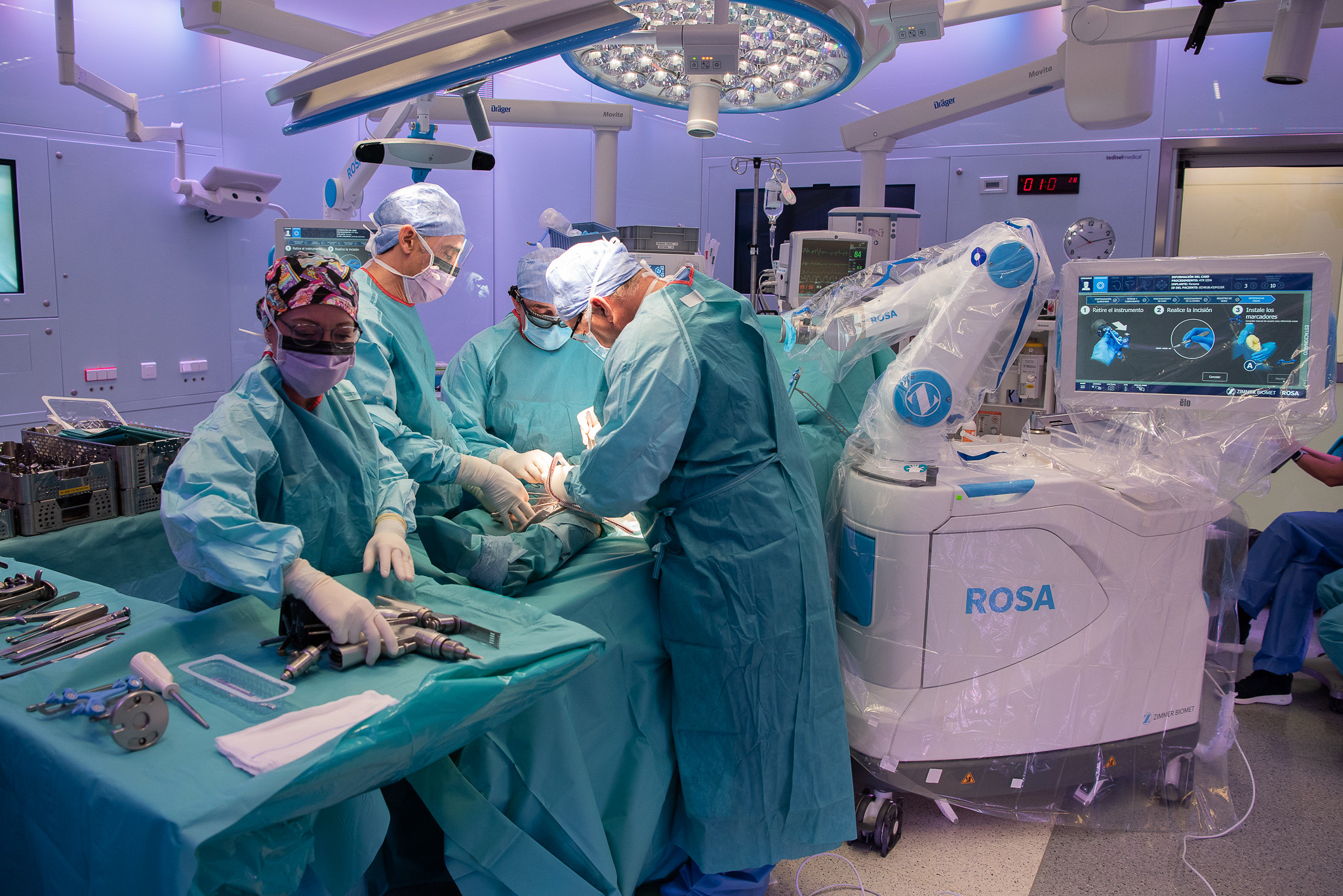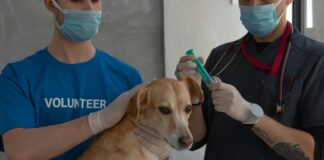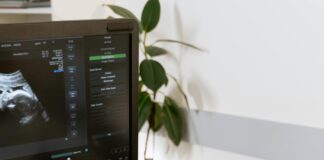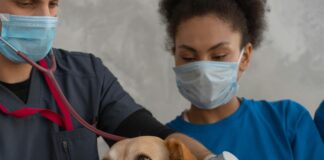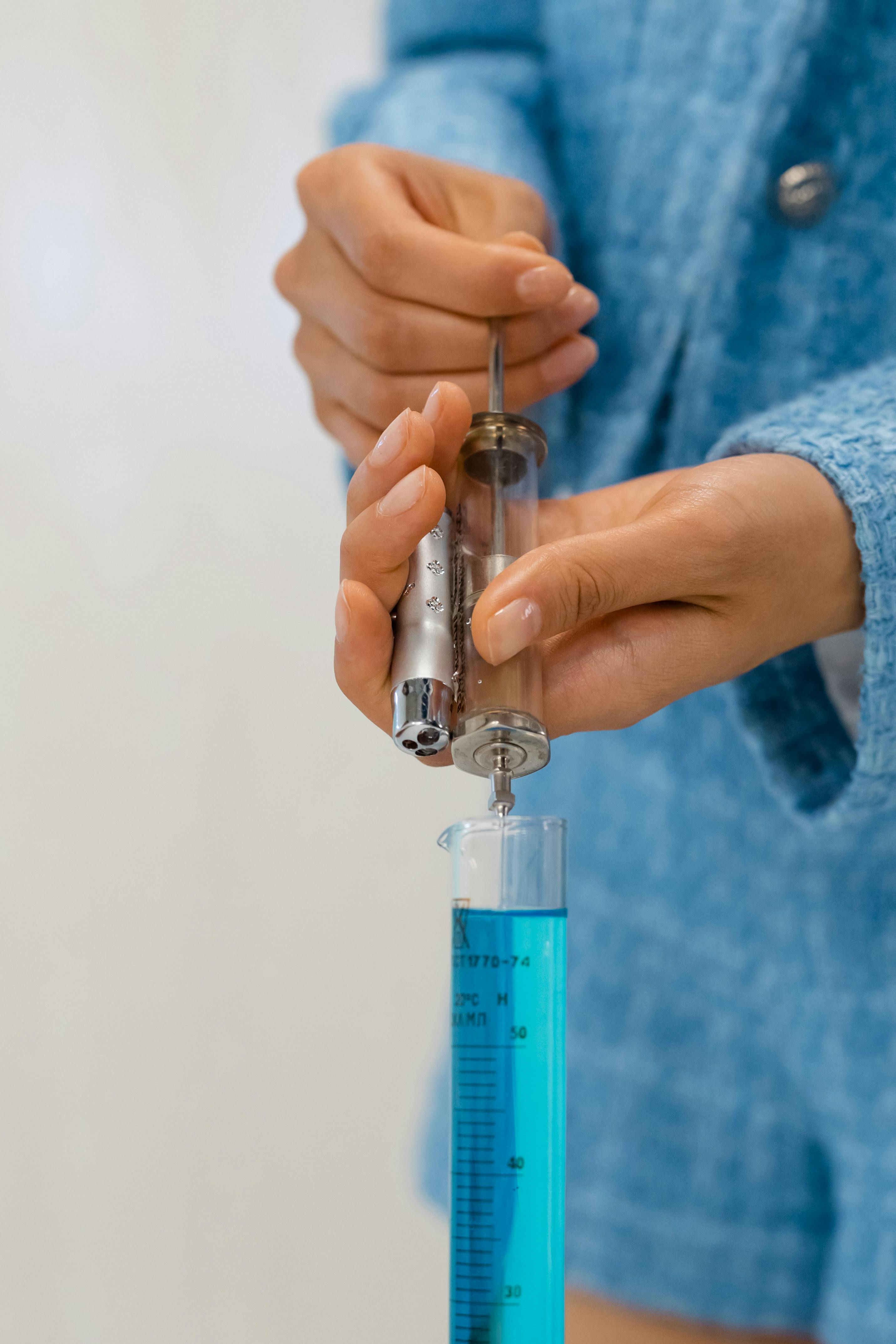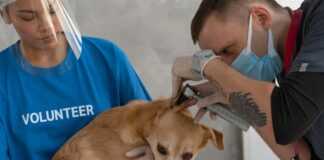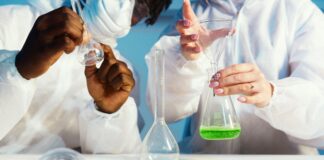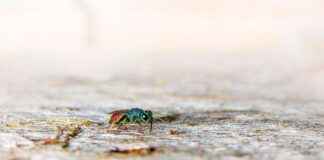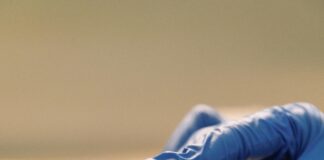Jaundice is a fascinating yet concerning medical condition that many people often overlook until symptoms become hard to ignore. Have you ever wonder what are the clinical features of jaundice and how they manifest in different patients? This condition, characterized by the yellowing of the skin and eyes, can be a sign of serious underlying health problems. The early signs of jaundice in adults can sometimes be subtle, making it crucial to understand the warning signals. What causes these changes, and how can recognizing the symptoms of jaundice in newborns save lives? From the causes of jaundice in adults to the treatment options available, this topic is loaded with vital information. You might be surprised to know that jaundice is not just a simple discoloration but a window into liver health and overall bodily functions. Are you curious about the types of jaundice and their symptoms? Understanding these can help you or your loved ones seek timely medical advice. Stay tuned as we unravel the most common clinical features of jaundice and explore why this condition demands immediate attention. Don’t miss out on learning the essential signs that could potentially save you or someone you care about!
Top 10 Clinical Features of Jaundice Every Healthcare Professional Should Recognize
Understanding the Clinical Features of Jaundice: What You Need to Know
Jaundice, for those who maybe never heard about it, is a condition where your skin and the white part of your eyes turn yellowish. This happens because of an excess of bilirubin in the blood, but not everyone knows what signs to look for. So, let’s dive into the clinical features of jaundice and why they kinda matter (even if you think, “Meh, it’s just yellow skin, right?”).
What Exactly is Jaundice?
First up, the basics — jaundice is not a disease on its own, but a symptom indicating there’s something wrong with your liver, gallbladder, or sometimes the blood system. When bilirubin, a yellow pigment formed by the breakdown of red blood cells, builds up, it causes that telltale yellow skin. Easy enough, but there’s more to it than just looking like a Simpsons character.
The Main Clinical Features of Jaundice
Here’s a quick table to break down the main clinical features of jaundice you should be aware of:
| Feature | Description | Common in Which Type of Jaundice? |
|---|---|---|
| Yellowing of Skin/Eyes | The classic yellow discoloration, usually first noticed in the sclera (eyes) | All types |
| Dark Urine | Urine becomes darker because of excess bilirubin excretion | Obstructive and Hepatocellular |
| Pale Stools | Stools may become pale or clay-colored due to lack of bile pigments | Obstructive jaundice |
| Itching (Pruritus) | Intense itching caused by bile salt deposits in skin | Obstructive jaundice |
| Fatigue and Weakness | Feeling tired, low energy, sometimes nausea | Hepatocellular jaundice |
Not really sure why this matters, but doctors also look for other signs like abdominal pain or fever, which can clue them in on the jaundice cause. It’s like a detective story, but with your liver.
Different Types of Jaundice and Their Features
To make it less confusing, jaundice comes mainly in three flavors: pre-hepatic, hepatic, and post-hepatic. Maybe it’s just me, but I feel like these terms sound like something out of a sci-fi movie.
Pre-hepatic jaundice: This one happens before the liver gets involved — usually because of excessive breakdown of red blood cells (hemolysis). People with this might not get dark urine or pale stools because the liver’s still working fine.
Hepatic jaundice: This is when the liver itself is sick (think hepatitis or cirrhosis). You’ll notice yellow skin, dark urine, maybe some fatigue. The liver can’t process bilirubin properly.
Post-hepatic jaundice: Caused by obstruction in bile flow (like gallstones or tumors). Dark urine, pale stools, and itching are common here.
Clinical Signs You Shouldn’t Ignore
Here’s a quick checklist if you suspect someone have jaundice:
- Yellowing of eyes or skin (duh!)
- Dark-colored urine, like cola or tea (gross, but true)
- Pale or chalky stools
- Persistent itching without rash
- Right upper abdominal pain
- Fatigue and loss of appetite
- Fever or chills (might indicate infection)
Laboratory Features and What They Tell Us
Doctors don’t just eyeball you and say “Yep, jaundice.” They run tests, and here’s some of the main ones:
| Test | What It Shows | Interpretation |
|---|---|---|
| Serum Bilirubin | Measures total and direct bilirubin levels | High total but normal direct = pre-hepatic |
| Liver Function Tests | ALT, AST, ALP, GGT levels | Elevated in hepatic and post-hepatic jaundice |
| Complete Blood Count | Checks for anemia or hemolysis | High reticulocytes = pre-hepatic causes |
| Ultrasound | Imaging to detect bile duct obstruction | Useful in post-hepatic jaundice |
Not gonna lie, sometimes these tests can be as confusing as assembling IKEA furniture without instructions.
Why Should You Even Care About These Clinical Features?
Okay, maybe you’re thinking, “It’s just yellow skin, why make a fuss?” Well, jaundice can mean anything from a harmless condition to something life-threatening. For example, newborns often get jaundice which usually clears up, but in adults, it might signal hepatitis, gallstones, or even cancer. Catching the clinical features of jaundice early can save a life, or at least prevent some
How to Identify Early Signs of Jaundice: Essential Clinical Features Explained
Understanding the Clinical Features of Jaundice: A Not-So-Perfect Guide
Jaundice, oh boy, it sounds scary but it’s really just a fancy word for yellow skin and eyes. If you never seen someone with jaundice, well, you’re lucky, or maybe unlucky if you find medical stuff fascinating (like me). The clinical features of jaundice are quite interesting, yet sometimes confusing. So, let’s dive into this yellow river and see what’s all the fuss about.
What is Jaundice, Anyway?
Basically, jaundice happens when there’s too much bilirubin floating in your blood. Bilirubin is this yellow stuff that your body makes when it breaks down old red blood cells. Normally, your liver takes care of it and flush it out, but if something goes wrong, bilirubin builds up and paints your skin and eyes yellow. Not really sure why this matters, but doctors seem to care a lot about this yellow tint.
Key Clinical Features of Jaundice: A Quick List
| Feature | Description | Why it matters (maybe) |
|---|---|---|
| Yellowing of skin | Skin turns yellow, mostly visible on face, hands, and feet | It’s the most obvious sign, like a neon sign screaming “Hey, I’m sick!” |
| Yellow eyes (sclera) | Whites of the eyes turns yellow | Often the first place people notice, so don’t ignore it! |
| Dark urine | Pee looks darker than usual | This means bilirubin is leaving your body through urine, not poo |
| Pale stools | Stools become lighter in color | Because bilirubin isn’t reaching intestines properly |
| Itching (pruritus) | Skin itchiness without rash | Seriously annoying, makes you wanna scratch all day |
| Fatigue | Feeling tired all the time | Not just lazy, your body is fighting something |
| Abdominal pain | Sometimes pain in upper right abdomen | Could mean liver or gallbladder is angry |
See? There’s more than just looking yellow. But wait, the story doesn’t end here.
Types of Jaundice Based on Clinical Features
Jaundice isn’t one-size-fits-all. It comes in different flavors, each with its own set of symptoms and causes. Here’s a breakdown:
| Type of Jaundice | Clinical Features | Additional Notes |
|---|---|---|
| Pre-hepatic Jaundice | Mild yellowing, dark urine, no pain usually | Caused by too much breakdown of red blood cells |
| Hepatic Jaundice | Yellow skin and eyes, fatigue, abdominal pain, itching | Liver itself is sick, like hepatitis or cirrhosis |
| Post-hepatic Jaundice | Severe yellowing, pale stools, intense itching | Blockage of bile ducts, like gallstones |
Maybe it’s just me, but I feel like doctors love throwing these big words around just to confuse us more.
Practical Insights You Might Wanna Know
- Yellow eyes first, skin later: Sometimes jaundice shows in eyes before skin. So, don’t just check your face in the mirror.
- Dark urine means something’s up: If your pee looks like cola, better get checked.
- Itching is a real pain: And no lotion helps, because it’s not just dry skin, it’s bilirubin irritating your nerves.
- Not all jaundice is serious: Newborn babies often get jaundice, and it goes away by itself. But adults? Different story.
A Handy Table of Clinical Features With Causes and Possible Treatment
| Clinical Feature | Possible Cause | Common Treatment Options |
|---|---|---|
| Yellow skin | High bilirubin due to liver problems | Depends on cause; meds, surgery, or just wait |
| Dark urine | Bilirubin excreted in urine | Hydration, treat underlying cause |
| Pale stools | Bile duct obstruction | Surgery or endoscopic procedures |
| Itching | Bilirubin deposit in skin nerves | Antihistamines, bile acid resins |
| Fatigue | Liver dysfunction | Rest, medication, lifestyle change |
Why Should You Care About These Clinical Features of Jaundice?
Honestly, most people just freak out seeing yellow skin and rush to Google (guilty as charged). But knowing these symptoms help doctors figure out what’s really going on. Not all jaundice mean the same thing. It can be something simple like a virus, or something serious like liver failure. So next time you (or your creepy uncle)
What Are the Most Common Clinical Symptoms of Jaundice in Adults?
Understanding the Clinical Features of Jaundice: What You Need to Know
Jaundice, oh boy, it’s one of those medical conditions that everyone hears about but not many really understand what’s going on inside the body. So, let’s dive into the clinical features of jaundice and try to make some sense out of this yellowish predicament. Now, I’m not really sure why this matters, but jaundice isn’t a disease itself, it’s more like a symptom or a sign that something fishy is going on inside your liver or bile system.
What is Jaundice, Really?
Simply put, jaundice is when your skin, eyes, or mucous membranes turn yellow. Yes, yellow! This happens because of an excess of bilirubin in the blood — bilirubin being this yellow pigment that forms when your body breaks down old red blood cells. When bilirubin can’t be properly processed or removed, it builds up and starts coloring you like a walking post-it note.
Main Clinical Features of Jaundice
Below is a table summarizing the clinical features of jaundice that doctors often look out for:
| Feature | Description | Why it Happens |
|---|---|---|
| Yellow discoloration | Skin and sclera (white of the eyes) become yellowish | Excess bilirubin deposits in tissues |
| Dark urine | Urine turns dark brown or tea-colored | Bilirubin excreted through kidneys |
| Pale stools | Stools become light or clay-colored | Lack of bile pigments reaching intestines |
| Itching (pruritus) | Intense itching without rash | Accumulation of bile salts in skin |
| Fatigue and malaise | Feeling tired or unwell | Liver dysfunction impacts overall energy levels |
| Abdominal pain | Discomfort in the upper right abdomen | Possible liver or gallbladder inflammation |
Notice, the way these features show up can vary a lot. Sometimes you get all of them, sometimes just a few. It’s like playing medical roulette.
Types of Jaundice and Their Clinical Signs
Maybe it’s just me, but categorizing jaundice types helps to understand the clinical features of jaundice better. Here’s a quick rundown:
Pre-hepatic Jaundice: This happens before bilirubin even reaches the liver. Think of increased breakdown of red blood cells, like in hemolytic anemia. You’ll see yellow sclera, dark urine, but usually stools stay normal color. Also, patients might have splenomegaly (enlarged spleen), but that’s not always there.
Hepatic Jaundice: This one is due to liver problems, like hepatitis or cirrhosis. Here, the liver can’t process bilirubin well. Patients often have yellowing of skin and eyes, dark urine, pale stools, itchiness, and sometimes swelling in the abdomen due to fluid buildup.
Post-hepatic Jaundice: Caused by blockage of bile flow after the liver, like gallstones or tumors in bile ducts. Along with jaundice, you might notice intense itching and pale stools because bile can’t reach the intestines.
Practical Insights: How to Spot Jaundice Like a Pro
If you ever need to impress someone at a party (or not), here’s a neat checklist you can remember:
- Check the whites of eyes first, they turn yellow early.
- Look at skin in natural light, yellowness shows better.
- Ask if urine got darker recently (tea or cola color?).
- Check if stools are unusually pale.
- Inquire about any itching or unexplained fatigue.
Some Common Confusions About Jaundice
Not to rain on your parade, but sometimes jaundice isn’t as straightforward. For example, some folks with jaundice don’t have yellow eyes or skin right away. Also, newborn babies often get jaundice, but that’s a whole different kettle of fish. The clinical features of jaundice in newborns can include poor feeding and lethargy, but usually it’s harmless and goes away on its own.
Table: Causes vs. Clinical Features of Jaundice
| Cause | Yellow Sclera | Dark Urine | Pale Stools | Itching | Fatigue | Abdominal Pain |
|---|---|---|---|---|---|---|
| Hemolytic anemia | Yes | Yes | No | No | Sometimes | No |
| Hepatitis | Yes | Yes | Yes | Yes | Yes | Sometimes |
| Gallstones | Yes | Yes | Yes | Yes | No | Yes |
Unveiling the Hidden Clinical Signs of Jaundice You Can’t Afford to Miss
Clinical Features of Jaundice: What You Probably Didn’t Know (Or Maybe You Did, Who Knows)
Jaundice, oh jaundice — that yellowish tint that make your skin and eyes look like you been eating too many carrots, but actually, it’s way more complex than that. When it comes to the clinical features of jaundice, there’s a whole bunch of stuff going on in your body that most people don’t even think twice about. So, let’s dive deep — and trust me, it’s not all sunshine and rainbows here.
What Exactly Is Jaundice?
First off, jaundice isn’t a disease itself, it’s a symptom. Yeah, sounds obvious, but you be surprise how many folks think it’s some kind of illness on its own. Basically, jaundice happens when there’s too much bilirubin in your blood. Now, bilirubin is this yellowish pigment, and when it builds up, your skin and eyes start to look… well, like a Simpsons character.
But why does bilirubin build up? That question has like a million answers, but the main reasons usually fall into three categories: pre-hepatic, hepatic, and post-hepatic causes. I know, fancy words for something that’s probably gonna make you scratch your head.
The Big Three: Categories of Jaundice Causes
| Category | What It Means | Examples |
|---|---|---|
| Pre-hepatic | Before the liver | Hemolysis (breaking down red blood cells too fast) |
| Hepatic | Inside the liver | Hepatitis, cirrhosis, genetic issues like Gilbert’s syndrome |
| Post-hepatic | After the liver (bile duct issues) | Gallstones, tumors blocking bile ducts |
Not really sure why this matters, but doctors use these categories to figure out what the heck is going on in your body when you turn yellow.
The Classic Clinical Features of Jaundice
Okay, now to the juicy part — how does jaundice actually show up? Spoiler alert: it’s not just yellow skin and eyes. Here is a quick list of clinical features of jaundice you might spot:
- Yellow discoloration: This one is like the headline feature. Usually starts in the sclera (white of the eyes) because bilirubin loves hanging out there. Then it spreads to the skin, sometimes even the nails and palms.
- Dark urine: Because bilirubin is excreted through urine when it’s hanging around too much. Your pee might look like cola or dark tea. Gross, I know.
- Pale stools: If bile can’t reach the intestines (post-hepatic block), stools lose their color and look pale or clay-colored.
- Itching (pruritus): This one is a real pain. Bilirubin or bile salts build-up makes your skin itch like crazy. Scratching won’t help, but people do it anyway.
- Fatigue and malaise: Not super specific, but when your liver is unhappy, you feel it all over.
- Abdominal pain: Sometimes jaundice comes with pain, especially if gallstones or inflammation is involved.
Here’s a Table That Might Help You Remember Stuff (Or Not)
| Symptom | Likely Cause | Notes |
|---|---|---|
| Yellow sclera | Any jaundice | First place to notice |
| Dark urine | Conjugated hyperbilirubinemia | Bilirubin is water-soluble here |
| Pale stools | Obstruction of bile flow | Think blocked pipe |
| Itching | Cholestasis (bile build-up) | Sometimes terrible, sometimes mild |
| Fever | Infection (sometimes hepatitis) | Not always present |
| Weight loss | Chronic liver disease or cancer | Worrisome sign |
Different Types of Jaundice and Their Features
Maybe it’s just me, but I find the types of jaundice a bit confusing. Here’s a quick rundown with some practical insights:
1. Pre-hepatic Jaundice:
This happens when red blood cells break down too fast (hemolysis). You get lots of unconjugated bilirubin, which your liver can’t handle quickly enough. The clinical features of pre-hepatic jaundice usually include mild jaundice, dark urine might not be present because bilirubin is unconjugated and not water-soluble. Patients might also feel tired and have an enlarged spleen sometimes.
2. Hepatic Jaundice:
This is when the liver itself is sick — hepatitis or cirrhosis are common culprits. Both conjugated and unconjugated bilirubin levels
Jaundice in Newborns: Key Clinical Features and When to Seek Medical Help
Understanding the Clinical Features of Jaundice: A Detailed Look
Jaundice, for those who might not knows already, is a condition that makes your skin and the whites of your eyes turn yellow. Weird, right? But it happens when there’s too much bilirubin in the blood, which is a yellow pigment that your body usually gets rid of. Now, the clinical features of jaundice are many and sometimes confusing, so let’s try to break them down without making your head spin.
What is Jaundice Exactly?
Before diving into the nitty-gritty, let me just say that jaundice isn’t a disease itself but a sign of something else going wrong in your body. Maybe your liver is not doing its job, or there’s a blockage somewhere in the bile ducts — who knows? It’s like a big yellow flag waving that says, “Hey, check me out!”
Key Clinical Features of Jaundice
Here’s a quick list of the most common stuff you might see or feel if jaundice is knocking on your door:
| Clinical Feature | Description | Common in Which Type of Jaundice? |
|---|---|---|
| Yellowing of skin and eyes | The tell-tale sign; skin and sclerae (eye whites) turn yellow or greenish. | All types of jaundice |
| Dark urine | Urine becomes dark tea-colored because excess bilirubin is excreted. | Obstructive and hemolytic jaundice |
| Pale stool | Stool loses its color, looking clay-like due to lack of bile pigments. | Obstructive jaundice |
| Itching (pruritus) | Severe itching that seems to come from nowhere. | Cholestatic jaundice |
| Fatigue | Feeling unusually tired, like you just ran a marathon with no training. | All types, but especially hepatocellular |
| Abdominal pain | Usually around the upper right side where the liver lives. | Obstructive and infective jaundice |
Not really sure why this matters, but some patients also complain about nausea, vomiting, and fever. Maybe it’s just me, but I feel like those symptoms are kinda generic and could be from anything.
Types of Jaundice and Their Clinical Features
To get a better grip, jaundice is generally divided into three types, and each one has slightly different features. This table might help you see the differences (or at least try to):
| Type of Jaundice | Cause | Main Clinical Features |
|---|---|---|
| Pre-hepatic (Hemolytic) | Excess breakdown of red blood cells | Rapid onset jaundice, dark urine, no pale stool |
| Hepatic (Hepatocellular) | Liver cell damage | Jaundice with fatigue, abdominal pain, and sometimes itching |
| Post-hepatic (Obstructive) | Blockage of bile ducts | Pale stool, dark urine, intense itching, abdominal pain |
How to Recognize Jaundice in Real Life
If your skin is turning yellow, you probably noticed it yourself already. But here’s a pro tip: the yellowing usually starts in the eyes — sclera — before it spreads to the skin. So, next time you’re staring at yourself in the mirror for longer than socially acceptable, check your eye whites.
Another thing, sometimes jaundice can cause you to scratch your skin like a dog with fleas, because of the itching. This itching (pruritus) is not just annoying, it can be downright maddening. But why does it happen? Well, apparently bile salts get under your skin and irritate the nerve endings. Not fun.
Practical Insights: What Doctors Look For
When a patient comes in with suspected jaundice, doctors don’t just eyeball the yellow skin and call it a day. They look for other clinical features of jaundice like:
- Palmar erythema: Redness on the palms
- Spider nevi: Small, spider-like blood vessels on the skin
- Hepatomegaly: Enlarged liver detectable by touch or imaging
- Splenomegaly: Enlarged spleen, which can happen in hemolytic jaundice
Seriously, these signs are like clues in a mystery novel. Without them, doctors would be just guessing.
The Timeline: How Quickly Does Jaundice Develop?
Jaundice’s appearance can be sudden or slow, depending on what’s causing it. For example:
- Hemolytic jaundice: Develops quickly because red blood cells are breaking down fast.
- Chronic liver disease: The yellowing comes on slowly, creeping over weeks or months
Step-by-Step Guide to Understanding the Clinical Presentation of Jaundice
Clinical Features of Jaundice: What You Need to Know (Maybe More Than You Wanted)
Alright, so we are diving into the clinical features of jaundice today. Not really sure why this matters for everyone, but hey, jaundice is one of those things that pops up in hospitals and clinics more than you think. So, if you ever find yourself wondering what’s going on when someone’s skin turns yellow (or your own, fingers crossed not!), this article gonna shed some light on it.
What is Jaundice Anyway?
In simplest terms (and I mean super simple), jaundice is when your skin, eyes, or even the inside of your mouth turns yellow. This happens cause there is too much bilirubin in your blood. Bilirubin is this yellow pigment that comes from the breakdown of red blood cells — yeah, our bodies are recycling machines but sometimes they get a bit messy.
Now, before you panic, jaundice itself isn’t a disease, it’s more like a sign that something else in the body is off. Maybe your liver is playing up, or your bile ducts are getting blocked, or your blood cells breaking down too fast. Lots of reasons, honestly.
Clinical Features of Jaundice: The Basics (With a Table Because Why Not)
| Feature | What You Notice | Why It Happens |
|---|---|---|
| Yellowing of skin and eyes | Skin and the whites of eyes turn yellow | Excess bilirubin deposits in tissues |
| Dark urine | Pee looks darker than usual, like cola | Bilirubin gets excreted through urine |
| Pale stools | Poop loses its normal brown color | Lack of bile pigments reaching intestines |
| Itching (pruritus) | You feel itchy all over, like crazy | Accumulation of bile salts in skin |
| Fatigue and weakness | Feeling unusually tired and weak | Body’s response to underlying cause |
Not every jaundice case have all these features, sometimes just one or two show up. Maybe it’s just me, but I feel like doctors should give you a checklist before they start talking about liver biopsies.
Types of Jaundice and Their Clinical Signs (Because “Jaundice” is Not One-Size-Fits-All)
Pre-hepatic jaundice
This one happens before the liver gets involved. Usually from too much breakdown of red blood cells (hemolysis). Clinical features include pale stools and dark urine, but sometimes the skin yellowing ain’t that pronounced. Also, you might see signs of anemia, like tiredness and breathlessness.Hepatic jaundice
So the liver is the main culprit here. It could be because of infections like hepatitis, alcohol damage, or autoimmune stuff. You see yellow eyes, yellow skin, and sometimes nausea and loss of appetite. Oh, and the itching? That’s pretty common here too.Post-hepatic jaundice
This is caused by blockages in bile ducts. Gallstones, tumors, or strictures can block the flow of bile. The clinical features are classic: yellow skin, dark urine, pale stools, and intense itching. People also complain about pain in the upper right belly area.
Fun Fact (or Not So Fun): Why Your Eyes Turn Yellow First
Ever noticed that jaundice first shows up in the whites of your eyes? That’s because the sclera (that’s the white part) has a high concentration of elastin fibers which soak up bilirubin faster than your skin. Weird, right? Not really sure why this matters, but many doctors use this as a quick check for jaundice.
Practical Insights: How to Spot Jaundice Early (Because Prevention is Better Than Cure)
- Look at the eyes: If the white part looks yellowish, that’s a big red flag.
- Check urine color: Darker than usual? Might be bilirubin in there.
- Feel the skin: Itching without rash can be a sneaky symptom.
- Ask about fatigue: Jaundice often tags along with tiredness.
- Observe stool color: Pale or clay-colored stools are suspicious.
Quirky Table: Clinical Features of Jaundice vs Other Yellowish Conditions
| Condition | Yellow Skin? | Yellow Eyes? | Itching? | Stool Changes? | Notes |
|---|---|---|---|---|---|
| Jaundice | Yes | Yes | Often | Often | Due to bilirubin excess |
| Carotenemia | Yes (orange) | No | No | No | From eating too many carrots |
| Anemia (some types) | No |
7 Crucial Clinical Features That Differentiate Types of Jaundice in Patients
Understanding the Clinical Features of Jaundice: What You Need to Know
Jaundice is one of those medical terms you might hear thrown around a lot, especially in hospital dramas or health documentaries, but what really are the clinical features of jaundice? Honestly, it’s not just about having yellow skin; there’s a bunch more going on underneath. So, let’s break it down, and yeah, I might mess up the grammar a bit here and there—don’t blame me!
What is Jaundice Anyway?
Jaundice, simply put, is the yellowing of skin and eyes caused by a buildup of a substance called bilirubin. When your liver is lazy or overwhelmed, bilirubin doesn’t get processed right, and it starts to show up in your tissues. Not really sure why this matters, but bilirubin is actually a breakdown product of red blood cells—so your body is kinda recycling old blood. Weird, right?
Main Clinical Features of Jaundice
Here’s a quick list of symptoms that usually comes with jaundice. This is like your checklist to spot it:
| Clinical Feature | Description | Why it Happens |
|---|---|---|
| Yellowing of skin & eyes | Skin and whites of the eyes turn yellowish | Bilirubin accumulation |
| Dark urine | Pee looks like cola or tea | Excess bilirubin excreted in urine |
| Pale stools | Your poop turns light or clay color | Lack of bile pigments in intestines |
| Itching (pruritus) | You scratch like crazy, but nothing helps | Bile salts irritating skin |
| Fatigue and weakness | Feeling tired all the time, like a zombie | General illness and toxin buildup |
| Abdominal pain | Sometimes pain in the upper right belly | Liver or gallbladder involvement |
Maybe it’s just me, but I feel like the itching part deserves a special mention. Imagine being so itchy you wanna claw your own skin off because your liver can’t do its job properly. Not fun.
Types of Jaundice and Their Features
Jaundice is not a one-size-fits-all thing. Different causes bring slightly different clinical features of jaundice, and doctors use these clues to figure out what’s wrong. Here’s a quick rundown:
| Type of Jaundice | Clinical Features | Common Causes |
|---|---|---|
| Pre-hepatic (Hemolytic) | Rapid onset, dark urine, no pale stools | Excess red blood cell breakdown |
| Hepatic (Liver related) | Yellow skin, dark urine, pale stools, fatigue | Hepatitis, liver cirrhosis |
| Post-hepatic (Obstructive) | Jaundice with intense itching, pale stools | Gallstones, bile duct obstruction |
You might notice some overlap in symptoms, which makes diagnosis tricky—like a puzzle but with your body’s health on the line. Fun times!
Diagnostic Clues from Clinical Features of Jaundice
Doctors don’t just eyeball the yellowness and call it a day. They look for other signs too, such as:
- Scleral icterus: Yellowing of the whites of your eyes, usually the first thing you notice.
- Tender liver: If your liver hurts when poked, that’s a red flag.
- Spider angiomas: Little red spider-like blood vessels on your skin, often seen in liver disease.
- Palmar erythema: Reddened palms, another liver issue sign.
Here’s a neat little checklist you can try out if you want to play doctor at home (but please, don’t):
| Sign | Present (Yes/No) | Comments |
|---|---|---|
| Yellow skin | ||
| Yellow eyes | ||
| Dark urine | ||
| Pale stools | ||
| Itching | How bad? | |
| Abdominal pain | Where exactly? |
Why Should You Care About These Clinical Features?
Not really sure why this matters, but knowing the clinical features of jaundice can actually save your life or someone else’s. If you notice yellow skin, dark urine, or even just feel super tired and itchy, it might be time to see a doctor. Ignoring jaundice is like ignoring a fire alarm—it won’t go away on its own, and things might get worse.
Practical Insights and Tips
- If you’re seeing jaundice in a newborn, don’t wait. Newborn jaundice can be normal but sometimes requires urgent treatment.
- Dark urine and pale stools together
Why Yellowing Skin and Eyes Are Just the Beginning: Comprehensive Clinical Signs of Jaundice
Clinical Features of Jaundice: What You Really Need To Know (or Maybe Not)
Jaundice, man, it’s one of those medical things that sounds fancy but really just means your skin and eyes turn yellowish. Not really sure why this matters, but apparently it’s a sign that your body’s bilirubin levels gone up, like way too high. So, let’s dive into the clinical features of jaundice and see what this yellow monster is all about.
What is Jaundice Anyway?
Before we get into the nitty gritty, jaundice is caused by accumulation of bilirubin in the blood. Bilirubin is this yellow pigment produced when red blood cells breaks down. Normally, your liver cleans it up, but if it fails or something block the flow, bam! Yellow skin and eyes.
But hey, don’t just think it’s a cosmetic problem. Jaundice can be a sign of serious underlying issues like liver disease, hemolysis, or bile duct obstruction.
The Main Clinical Features of Jaundice
Let me list out the big players in the clinical features of jaundice:
| Clinical Feature | Description | Notes |
|---|---|---|
| Yellow discoloration | Skin and sclera (white part of eyes) turns yellow | Usually starts at the eyes and spreads |
| Dark urine | Pee looks darker than usual, sometimes tea-colored | Bilirubin in urine causes this |
| Pale stools | Stools can become clay-colored or pale | Due to lack of bile pigment |
| Itching (pruritus) | Patients often complain of severe itching | Bile salts deposit in skin |
| Fatigue and weakness | Feeling tired or weak without obvious reason | Could be related to liver dysfunction |
| Abdominal pain | Sometimes pain in the right upper quadrant | May indicate gallstones or liver swelling |
Not every person will have all this symptoms, but usually a combination of them.
Types of Jaundice and Their Features
Okay, this part can be confusing. Jaundice is not just one thing but has different types based on where the problem lies:
Pre-hepatic jaundice: This is when too much bilirubin is produced because of rapid breakdown of red cells (hemolysis). The clinical features of jaundice in pre-hepatic jaundice include mild yellowing and dark urine is usually absent because liver can still handle the load.
Hepatic jaundice: This happens when the liver itself is sick, like in hepatitis or cirrhosis. The yellowing is more pronounced, and you may get pale stools and dark urine. Sometimes, confusion or brain fog (hepatic encephalopathy) shows up too.
Post-hepatic jaundice: Also called obstructive jaundice, caused by block in bile flow (gallstones, tumors). Intense itching, very pale stools, and dark urine are common. Not to mention, pain in upper right abdomen is frequent.
Table Comparing Types of Jaundice
| Feature | Pre-hepatic | Hepatic | Post-hepatic |
|---|---|---|---|
| Skin yellowing | Mild | Moderate to severe | Severe |
| Dark urine | Usually no | Yes | Yes |
| Pale stools | No | Sometimes | Yes |
| Itching | No | Sometimes | Yes |
| Abdominal pain | No | Sometimes | Yes |
Other Clinical Signs You Might Not Think About
Besides the yellow skin and eyes, jaundice can come with other stuff that doctors love to check:
- Spider angiomas: Little red spider-like blood vessels on the skin; often seen in liver disease.
- Palmar erythema: Redness in palms, again linked to liver problems.
- Enlarged liver or spleen: You might feel a lump under your ribs if these organs are swollen.
- Ascites: This is fluid buildup in the abdomen, making your belly look like a balloon.
Maybe it’s just me, but I feel like doctors mention these signs like they’re a secret code. But these signs help differentiate the cause of jaundice, which is super important.
Checklist for Clinical Features of Jaundice
If you suspect someone got jaundice, here’s a quick checklist you can run through (not that you’re a doctor or anything):
- [ ] Yellowing of skin or eyes?
- [ ] Dark colored urine?
- [ ] Pale or clay-colored stools?
- [ ] Intense itching?
- [ ] Fatigue or weakness?
- [ ] Ab
Clinical Features of Jaundice: How to Spot It Beyond the Obvious Symptoms
Clinical Features of Jaundice: What You Gotta Know (But Maybe Don’t Really Wanna Hear)
Alright folks, let’s talk about clinical features of jaundice, a topic that might sounds boring to some but is actually pretty important if you ever wanna understand what happens when your skin and eyes turn yellowish. Yeah, yellow – not the color you want, trust me. So, what exactly is jaundice? Simply put, it’s the yellowing of skin, mucous membranes, and the whites of the eyes caused by a build-up of bilirubin in the blood. Sounds fancy, right? But it’s a symptom, not a disease itself, which is something many people don’t realize.
Now, I’m not really sure why this matters, but people with jaundice often get a lot of questions about their condition. So, let’s dig into the clinical features of jaundice in adults and children, because they do vary a bit, and that can be confusing.
What You Might See or Feel with Jaundice
Before we dive into the nitty-gritty, here’s a quick table to give you an overview of some common clinical features associated with jaundice:
| Clinical Feature | Description | Frequency (Roughly) |
|---|---|---|
| Yellowing of skin | Skin turns yellowish, more visible in natural light | Almost always |
| Scleral icterus | Yellowing of the whites of the eyes | Almost always |
| Dark urine | Urine becomes unusually dark, like cola or tea | Common |
| Pale stools | Stools become clay-colored or pale | Common but not always |
| Itching (pruritus) | Intense itching without rash | Sometimes |
| Fatigue | Feeling of tiredness and weakness | Often |
| Abdominal pain | Pain in the right upper abdomen | Sometimes |
Yep, yellow skin and eyes are the big giveaways. But some people might only notice dark urine or pale stools, and that’s where the confusion starts.
Types of Jaundice and Their Clinical Features
Jaundice isn’t one-size-fits-all. There is pre-hepatic, hepatic, and post-hepatic jaundice. If you’re scratching your head thinking “what’s the difference?”, don’t worry, you’re not alone.
| Type of Jaundice | Cause | Key Clinical Features |
|---|---|---|
| Pre-hepatic | Excessive breakdown of red blood cells | Dark urine, but normal stool color, sometimes mild jaundice |
| Hepatic | Liver disease (hepatitis, cirrhosis, etc) | Yellow skin, dark urine, pale stools, fatigue, abdominal pain |
| Post-hepatic | Obstruction of bile ducts (gallstones) | Very dark urine, pale stools, intense itching, abdominal pain |
Maybe it’s just me, but the post-hepatic type sounds the worst. Like your body’s traffic jam got outta control.
Some Weird and Wonderful Clinical Clues You Might Not Expect
Not every jaundice case is textbook. Here’s a list of oddball features that sometimes tag along:
- Spider angiomas (little red spider-like blood vessels on the skin)
- Palmar erythema (redness of the palms)
- Hepatomegaly (enlarged liver)
- Splenomegaly (enlarged spleen)
- Ascites (fluid in the abdomen)
These aren’t always present but could clue doctors into underlying liver problems, which is what often hides behind jaundice.
Quick Practical Insight: How to Spot Jaundice Early at Home
If you’re worried about jaundice (or just wanna freak yourself out), here’s a quick checklist you can do:
- Look at the whites of your eyes in natural daylight – yellowish? Uh-oh.
- Check your skin, especially palms and soles.
- Notice if your pee looks like you been drinking too much cola.
- See if your poop looks pale or clay-colored.
- Ask if you feel unusually tired or itchy.
If you tick more than two boxes, maybe see a doc. But don’t panic, sometimes it’s just a minor thing like a cold or an upset stomach messing with your liver.
Why Do These Clinical Features Happen? (Spoiler: It’s All About Bilirubin)
Bilirubin is a yellow pigment made when old red blood cells get recycled by the liver. If bilirubin builds up (due to liver problems, bile duct blockage, or too many destroyed blood cells), it starts showing itself on your skin and eyes. That’s jaundice in a nutshell.
The Role of Dark Urine and Pale Stools in Diagnosing Jaundice: What You Need to Know
Understanding the Clinical Features of Jaundice: What You Need To Know
Jaundice, yeah, it’s one of those medical terms that everybody heard, but not many really understand what it means exactly. So, today we gonna dive deep into the clinical features of jaundice and try to make some sense out of it—while keeping things a bit messy, cuz, well, perfection is overrated, right?
What is Jaundice Anyway?
First off, jaundice isn’t a disease itself, but rather a symptom or sign that something is wrong with your body. Basically, it’s when your skin, eyes, and sometimes even your pee, turn a yellowish color. Not really sure why this matters, but it happens because of too much bilirubin in your blood. Bilirubin? Yeah, it’s this yellow pigment that forms when your body breaks down old red blood cells — usually your liver cleans it up nicely, but if it don’t, jaundice shows up.
The Main Clinical Features of Jaundice
Let me list down the primary clinical features of jaundice so you don’t get lost in too much medical jargon:
| Feature | Description | Why it Happens |
|---|---|---|
| Yellow Skin | Skin looks yellow, especially on face and hands. | Bilirubin builds up in the skin. |
| Yellow Eyes | The sclera (white part) of eyes turns yellow. | Bilirubin deposits in the eye’s tissues. |
| Dark Urine | Pee looks dark brown or tea-colored. | Excess bilirubin filtered by kidneys. |
| Pale Stools | Poops become pale or clay-colored. | Bile flow blocked, reducing color in stools. |
| Itching (Pruritus) | Persistent itching without rash. | Bile salts accumulate under the skin, irritating nerves. |
| Fatigue | Feeling tired all the time. | Body fighting underlying causes or liver dysfunction. |
| Abdominal Pain | Pain in the upper right side of the belly. | Liver or gallbladder issues causing discomfort. |
Honestly, this table should make it easier to grasp the whole picture if you’re like me and hate reading dense paragraphs.
Different Types of Jaundice and Their Features
Now, jaundice comes in different flavors (not the tasty kind, unfortunately). You got:
Pre-hepatic jaundice: This happens before bilirubin even reaches the liver. Usually, it’s from too many red blood cells breaking down. Think of it like an overworked garbage disposal system.
Hepatic jaundice: This one is liver’s fault. The liver cells get damaged and can’t process bilirubin properly. Hepatitis or cirrhosis usually to blame here.
Post-hepatic jaundice: This occurs after bilirubin leaves the liver, often due to blockages like gallstones or tumors in bile ducts.
Each type got its own subtle differences in clinical features, but all share that yellow skin and eyes thing. Maybe it’s just me, but I feel like the yellow eyes are the most obvious and kinda creepy looking.
More Detailed Insight Into Symptoms
To make it more practical, here’s a quick list of what you might observe if someone has jaundice:
- Yellowing of Skin and Eyes: This is the hallmark sign, can’t miss it.
- Dark Urine: Pee color changes suddenly? Don’t ignore it.
- Light-Colored Stools: If poop looks chalky, it’s suspicious.
- Itching: Random itching without rash? Yep, could be jaundice.
- Nausea or Vomiting: Sometimes comes along with jaundice.
- Fever or Chills: If infection is causing jaundice, these might show up.
- Weight Loss: Unexplained weight loss might be related to underlying liver disease.
Why the Clinical Features Matter (or Do They?)
Some doctors say these features help to figure out the cause of jaundice, but honestly, sometimes it just feels like guesswork. Like, if you have yellow eyes and dark urine, it means your liver or bile ducts probably not working right. But then again, you gotta do blood tests and imaging to be sure.
Here’s a quick checklist for clinical features related to jaundice diagnosis:
- Check skin and eye color carefully.
- Ask about urine and stool color.
- Note any itching or fatigue.
- Inquire about abdominal pain or fever.
- Look for signs of liver enlargement.
Practical Tips: When to See a Doctor?
If you notice any of the above signs — especially yellowing eyes or skin — don’t just shrug it off like
How Liver Dysfunction Manifests in Clinical Features of Jaundice: A Deep Dive
Clinical Features of Jaundice: What You Need to Know (With a Few Quirks Along the Way)
Jaundice, in case you didnt know, is that yellowish tint you sometimes see in people’s eyes or skin. Yeah, it’s not just some weird Hollywood makeup effect. It actually happen when there’s too much bilirubin in the blood. But what are the clinical features of jaundice that doctors look for? Well, pull up a chair and let’s dive right in — but dont expect this to be a perfectly polished lecture, because, well, life isn’t perfect and neither is my grammar.
What is Jaundice Anyway?
So, jaundice is basically a symptom, not a disease itself. It show up when your liver can’t process bilirubin properly or if there’s too much bilirubin being produced. Bilirubin is a yellow compound that forms when red blood cells are broken down. Normally, your liver cleans it up and sends it out through bile. But when this process goes haywire, your skin and eyes turn yellow. Easy peasy, right? Not really sure why this matters, but it’s important to understand cause it helps in diagnosing.
Main Clinical Features of Jaundice
Here, let me give you a quick list of the clinical features of jaundice. You can think of it like a checklist for doctors, or just a handy guide so you know when to freak out or not:
| Feature | Description | Notes |
|---|---|---|
| Yellowing of Skin | Skin develops a yellow discoloration | Usually noticeable first on face |
| Scleral Icterus | Yellowing of the whites of the eyes | One of the earliest signs |
| Dark Urine | Urine becomes darker than usual | Due to excess bilirubin |
| Pale Stools | Stools lose their normal brown color | Happens when bile flow is blocked |
| Itching (Pruritus) | Some patients experience itching | Not everyone gets this |
| Fatigue | Feeling tired or weak | Common but nonspecific symptom |
| Abdominal Pain | Sometimes pain in the right upper belly area | Could be related to liver or gallbladder issues |
The Yellow Look: Not Just Skin Deep
You might think jaundice only shows on your skin, but nope, it starts in the eyes first. This is called scleral icterus. The whites of your eyes turn yellow, and it’s usually the first clue that something’s wrong. If you notice this in yourself or others, maybe don’t just ignore it. But hey, some people might be born with a slightly yellowish tint — genetics can be weird like that.
Why Urine and Stool Color Matter?
Okay, this one gets a bit gross but stay with me. When bilirubin builds up, it also changes the color of your pee and poop. Sounds like a party trick, but it’s actually pretty important for docs. Dark urine happens because excess bilirubin is excreted through the kidneys. Pale stools happen when bile can’t reach the intestines, usually because of some blockage. So, if your poop looks like chalk, you probably want to see a doctor. Trust me on this one.
Itching? Seriously?
Some people with jaundice complain about itching (technically called pruritus). It’s like your skin is screaming at you for help. Not everyone gets this, and doctors don’t totally understand why it happen, but it’s thought to be due to bile salts depositing in the skin. Maybe it’s just me, but I feel like itching when you’re already feeling sick is the universe’s way of rubbing salt in the wound.
Fatigue and Abdominal Pain
Fatigue is a pretty vague symptom and could be from like a million different things. But in jaundice, it often come along for the ride. Abdominal pain, especially in the right upper quadrant (that’s the area below your ribs on the right side), can mean trouble with the liver or gallbladder. If you’re getting these symptoms with jaundice, you better get checked out, because it could be something serious.
Practical Insights: How Doctors Use These Features
Doctors don’t just throw these symptoms on a checklist and call it a day. They use a combination of these signs to figure out what’s causing the jaundice. Is it a liver problem? A bile duct blocked? Or maybe the red blood cells are breaking down too fast? Here’s a simplified way they think about it:
| Cause of Jaundice | Clinical Features | Additional Tests Needed |
|---|---|---|
| Pre-hepatic (Before liver) | Pale stools usually not present; dark urine present |
Jaundice Symptoms Checklist: 12 Clinical Features You Should Never Ignore
Understanding the Clinical Features of Jaundice: What You Should Know (or Maybe Not)
Jaundice, for those who don’t know, is this weird condition where your skin and eyes start looking yellowish. It’s not just some random color change, it actually signals something fishy going on inside your body. The clinical features of jaundice can be quite a mixed bag, and honestly, not everyone gets the same symptoms, which makes it a bit tricky to pin down. But hey, that’s medicine for you — always keeping us on our toes.
What is Jaundice Anyway?
So, jaundice happens when there’s too much bilirubin in your blood. Bilirubin is a yellow pigment that your body makes when it breaks down old red blood cells. Normally, your liver takes care of it, but when this process gets messed up, bilirubin builds up and voila — yellow skin and eyes. Not really sure why this matters, but doctors are super obsessed with measuring bilirubin levels to figure out how bad the jaundice is.
Main Clinical Features of Jaundice
Here’s where things get interesting, or confusing, depending on your mood. The clinical features of jaundice in adults and children can vary widely. Let’s break it down in a simple table because who doesn’t love a good table?
| Feature | Description | Notes |
|---|---|---|
| Yellowing of skin & eyes | The classic sign, hard to miss unless you’re colorblind | Usually starts in the sclera (whites of eyes) first |
| Dark urine | Urine may look like cola or tea, which is kinda gross | Happens because excess bilirubin is excreted by kidneys |
| Pale stools | Stools lose their normal brown color | Due to lack of bile pigments in the intestines |
| Itching (pruritus) | For some, the itching is unbearable | Caused by bile salt accumulation, honestly annoying |
| Fatigue and weakness | Feeling tired for no good reason | Not very specific but common in jaundice |
| Abdominal pain | Sometimes in the upper right quadrant | Could mean liver or gallbladder issues |
| Fever | May or may not be present | Usually points to infection |
Wait, There’s More? The Lesser-Known Symptoms
Maybe it’s just me, but I feel like doctors sometimes overlook these smaller signs. Here are some other symptoms that might pop up with jaundice:
- Nausea and vomiting: Feeling sick to your stomach, which might just be from worrying too much.
- Weight loss: Not something you want to hear, but can happen if jaundice is due to cancer or chronic liver disease.
- Swelling of legs and abdomen: Signals more serious liver problems, like cirrhosis or portal hypertension.
- Confusion or drowsiness: This is a scary one, called hepatic encephalopathy, meaning your liver’s really struggling.
Clinical Features of Jaundice: Causes and How They Relate
Jaundice ain’t just one disease; it’s a symptom of many underlying problems. To make things more complicated, the clinical features of jaundice based on causes can differ. Below is a quick guide to what you might expect depending on why you got jaundice in the first place:
| Cause | Clinical Features | Additional Notes |
|---|---|---|
| Pre-hepatic (Hemolysis) | Rapid onset jaundice, dark urine, no pain | Often with anemia symptoms |
| Hepatic (Liver disease) | Persistent jaundice, abdominal pain, fatigue | Could have liver enlargement or tenderness |
| Post-hepatic (Obstruction) | Intense itching, pale stools, severe abdominal pain | Usually caused by gallstones or tumors |
Diagnostic Tips (Because Guessing Isn’t Enough)
When you see a patient with jaundice, you don’t just look at the yellow skin and call it a day, no sir. Here are some practical insights that doctors use to figure out what’s up:
- Check bilirubin levels (total, direct, indirect)
- Liver function tests (ALT, AST, ALP, GGT)
- Complete blood count (to look for anemia or infection)
- Imaging studies like ultrasound or CT scan
- Sometimes a liver biopsy if things get super complicated
A Quick Checklist: What To Look For in Suspected Jaundice Cases
- [ ] Yellow discoloration of skin and eyes
- [ ] Dark urine and pale stools
- [ ] Itching and fatigue
- [ ] Abdominal pain or tenderness
- [ ] Fever or chills (infection clue)
- [ ] History of liver disease or alcohol use
- [ ] Medication review (some drugs cause
Understanding the Clinical Features of Jaundice in Chronic Liver Disease Patients
Clinical Features of Jaundice: What You Gotta Know (With a Twist of Reality)
Alrighty, so we’re diving into the clinical features of jaundice today. Now, if you think jaundice is just that yellow color you see sometimes in newborn babies, you’re kinda right, but there’s way more to it. Honestly, the yellowish tint is just the tip of the iceberg. There are lots of signs and symptoms that come with this condition and understanding them is super important if you wanna catch it early or just impress your doctor with your knowledge.
What is Jaundice Anyway?
Jaundice happens when there’s too much bilirubin in your blood. Bilirubin is this yellow pigment that your body makes when it breaks down old red blood cells. Normally, your liver cleans it out, but when your liver is lazy or something blocks the bile ducts, bilirubin piles up. Then, boom, you get that yellow tint in your skin and eyes.
Quick Table: Bilirubin Levels and Jaundice Severity
| Bilirubin Level (mg/dL) | Severity of Jaundice | Common Clinical Features |
|---|---|---|
| 1.0 – 2.5 | Mild | Slight yellowing of sclera (eyes) |
| 2.5 – 5.0 | Moderate | Yellowing of skin, sclera, mild itching |
| > 5.0 | Severe | Intense yellow skin, dark urine, pale stool |
Not really sure why this matters, but knowing your bilirubin numbers might sound nerdy, but it actually helps doctors decide what the heck is going on.
The Classic Signs You Shouldn’t Ignore
When talking about clinical features of jaundice, the yellow discoloration is the headline act. But there’s more backstage that you might miss if your eyes don’t pay attention.
1. Yellow Skin and Eyes
This is the most obvious one. Your skin and the white part of your eyes (called sclera) turns yellowish. It usually start in the eyes and then move to the skin. If someone says “You look like a Simpsons character,” they might be onto something.
2. Dark Urine and Pale Stools
Imagine this: your pee turns the color of cola, and your poop looks like chalk. Gross, but true. This happens because bilirubin is spilling over into your urine and not reaching your intestines where it normally colors your stool.
3. Itchy Skin (Pruritus)
Yeah, you might be scratching like crazy, and it’s not because you got fleas or anything. The bile salts that build up in your skin make it itch. Maybe it’s just me, but I find this part the most annoying.
4. Fatigue and Weakness
Feeling tired all the time? Jaundice can make you feel like you just ran a marathon without moving much. This happens because your liver isn’t doing it’s job properly, and toxins build up in your body.
5. Abdominal Pain
Sometimes, jaundice comes with pain or discomfort in the upper right side of your belly. That’s where your liver hangs out, so if it’s hurting, it might be telling you something ain’t right.
Types of Jaundice and Their Features
Okay, let’s get a bit technical — but don’t worry, I’ll keep it chill. Jaundice can be classified into three main types based on where the problem lies. Check out this cool chart I made:
| Type of Jaundice | Cause | Key Clinical Features | Notes |
|---|---|---|---|
| Pre-Hepatic (Hemolytic) | Excessive breakdown of RBCs | Rapid onset, dark urine, no pale stool | Bilirubin mostly unconjugated |
| Hepatic (Hepatocellular) | Liver cell damage (hepatitis) | Jaundice, fatigue, abdominal pain, elevated liver enzymes | Mixed conjugated/unconjugated bilirubin |
| Post-Hepatic (Obstructive) | Blockage in bile ducts | Jaundice, pale stool, dark urine, severe itching | Mostly conjugated bilirubin |
You see, knowing the clinical features of different types of jaundice helps doctors figure out what’s causing it, which is kinda important if you want to fix it.
Some Weird But True Clinical Insights
- Sometimes jaundice can cause your skin to smell weird — kind of like sulfur or rotten eggs. Not kidding, it’s called “fetor hepaticus.”
- Newborn babies can have jaundice too, and it’s super common. But if left untreated, it can cause brain damage (yikes!).
Can Jaundice Cause Fatigue? Exploring Lesser-Known Clinical Features of Jaundice
Understanding the Clinical Features of Jaundice: A Not-So-Perfect Guide
Jaundice, for those who don’t know, is that yellowish tinge that can show up on your skin and eyes. It’s not just some random color change, but actually a sign that something fishy is going on inside your body. If you ever wonder about the clinical features of jaundice, well, buckle up because this article gonna walk you through the ins and outs, with all the twists and quirks you might expect.
What is Jaundice? (Or Why Your Skin Turns Yellowish)
First off, jaundice happens when there’s too much bilirubin in your blood. Bilirubin, by the way, is a yellow pigment that your body makes when it breaks down old red blood cells. Normally, your liver cleans it up, but if the liver gets lazy or overwhelmed, bilirubin builds up, and boom—yellow skin and eyes.
Not really sure why this matters, but bilirubin levels that are high enough to cause jaundice usually are above 2-3 mg/dL. Don’t ask me why the numbers gotta be so specific, but that’s what the docs say.
The Classic Clinical Features of Jaundice
Here’s a quick table to sum up the main clinical features of jaundice you might see or experience:
| Feature | Description | Why it Happens |
|---|---|---|
| Yellowing of the skin | Yellow discoloration, usually starts at eyes | Bilirubin deposits in skin |
| Scleral icterus | Yellowing of the whites of the eyes | Bilirubin in conjunctival tissues |
| Dark urine | Urine turns dark brownish | Excess bilirubin excreted in urine |
| Pale stools | Stools become clay-colored | Lack of bile pigments in intestines |
| Itching (pruritus) | Persistent itching sensation | Bile salts deposit in skin |
| Fatigue | Feeling tired and weak | Underlying liver dysfunction affects energy |
But Wait, There’s More – Some Lesser Known Symptoms
Sometimes jaundice don’t come alone; it brings some friends that might confuse you or your doctor. Like, you might feel nauseous or vomit for no obvious reason, or get abdominal pain. Maybe even weight loss if it’s chronic.
Maybe it’s just me, but I feel like doctors ought to mention these more often because people sometimes ignore the smaller signs thinking it’s nothing serious.
Types of Jaundice and Their Clinical Clues
To make sense of this mess, jaundice is usually split into three types. Each got its own set of clues, sort of like different flavors of the same dish:
| Type | Causes | Clinical Features |
|---|---|---|
| Pre-hepatic | Hemolysis, sickle cell anemia | Rapid onset, dark urine, no pale stools |
| Hepatic | Hepatitis, cirrhosis, drugs | Variable onset, fatigue, abdominal pain, mixed urine/stool changes |
| Post-hepatic | Gallstones, tumors | Jaundice with pale stools and dark urine, itching |
You gotta remember these types because the treatment changes like night and day depending on which one you got.
Why You Should Care About These Clinical Features of Jaundice
Okay, so maybe you don’t wanna become a doctor overnight, but knowing about jaundice symptoms can save your butt or someone else’s. Jaundice isn’t a disease, it’s a symptom—sorta like a smoke alarm. If you ignore it, you might be missing a bigger fire somewhere inside.
Not really sure why this matters, but if your skin or eyes start looking yellowish, don’t just blame the lighting or that weird food you ate. Get yourself checked. It could be something as simple as a viral infection or as serious as liver failure.
Practical Tips and Insights
- Check Your Eyes: Often the easiest place to spot jaundice is the sclera (the white part of your eyes). If it looks yellow, that’s a red flag.
- Monitor Your Urine and Stool: Don’t ignore changes in urine color or stool color. Dark urine and pale stools often go together in jaundice cases.
- Look Out for Itching: It’s annoying and sometimes overlooked, but persistent itching can be a sign of bile salt buildup.
- Fatigue is a Big Deal: Feeling tired all the time? It might be your liver screaming for help.
- Consult a Doctor ASAP: If you recognize several of these signs, please don’t play the hero. Early diagnosis matters.
Quick Checklist for Clinical Features of Jaundice
Expert Insights: How to Use Clinical Features to Differentiate Hemolytic vs. Obstructive Jaundice
Clinical Features of Jaundice: What You Need to Know (With a Twist of Imperfection)
Jaundice, well, it’s one of those health things that everybody heard about but not many really understand the clinical features of jaundice in depth. So, let’s dive into it, and I’ll try to keep it as clear as possible — but heads up, I’m not a grammar teacher, so expect some wonky sentences here and there.
What is Jaundice Anyway?
In simple words, jaundice is when your skin, eyes, and sometimes even the inside of your mouth gets this yellowish tint. It sound weird, but it’s actually caused by a substance called bilirubin which builds ups in your blood. Normally, your liver processes bilirubin, but if something goes wrong, the bilirubin levels shoot up, and bam—you look yellow. Not really sure why this matter so much, but this yellowing is the classic clinical features of jaundice that doctors look for.
Common Clinical Features of Jaundice
Here’s a quick list of the main signs and symptoms you might notice if someone got jaundice:
| Symptom | Description |
|---|---|
| Yellowing of Skin and Eyes | This is the hallmark; eyes usually gets yellow first. |
| Dark Urine | Urine become a darker color, kinda like cola or tea. |
| Pale Stools | Stools turn pale or clay-colored cause bilirubin isn’t reaching the intestines. |
| Itching (Pruritus) | Sometimes, people scratch a lot, which can be really annoying. |
| Fatigue and Weakness | Feeling tired all the time, maybe due to liver dysfunction. |
| Abdominal Pain | Especially in the right upper quadrant, near the liver. |
Maybe it’s just me, but I feel like the clinical features of jaundice in adults are not always straightforward. Sometimes, the yellowing is subtle or comes late, so doctors got to dig deeper.
Types of Jaundice and Their Features
Not all jaundice is created equal. There’s different types and they come with their own set of symptoms and clinical signs.
| Type of Jaundice | Cause | Clinical Features Highlights |
|---|---|---|
| Pre-hepatic Jaundice | Excess breakdown of red blood cells (hemolysis) | Rapid onset, dark urine, no pain usually. |
| Hepatic Jaundice | Liver damage (hepatitis, cirrhosis) | Jaundice plus fatigue, nausea, sometimes pain. |
| Post-hepatic Jaundice | Blockage of bile ducts (stones, tumors) | Severe itching, pale stools, abdominal pain. |
So, when you hear clinical features of jaundice in newborns, it’s often pre-hepatic or hepatic and can be pretty serious if untreated. But adults? Sometimes it’s just a lazy liver or a blocked duct, you know?
More Weird and Wonderful Signs
Apart from the obvious yellowness, jaundice can come with some other odd features that not many people talks about:
- Spider angiomas: Little red spider-web like blood vessels on skin, common in liver disease.
- Palmar erythema: Redness on the palms, which looks kinda like a bad sunburn.
- Gynecomastia: Enlargement of male breast tissue in chronic liver disease cases.
- Confusion or Sleepiness: In severe liver failure, toxins build up affecting the brain.
Honestly, some of these signs are so random, it makes you wonder how the liver got connected to your palm or breast, but that’s medicine for ya.
How Doctors Diagnosed Jaundice? (With a Little Table)
Diagnosis involve checking the clinical features of jaundice and then confirming with some tests. Here’s a rough idea:
| Step | What Happens |
|---|---|
| History Taking | Doctor asks about symptoms, recent illness, meds. |
| Physical Exam | Looking for yellowing, palpates abdomen. |
| Blood Tests | Liver function tests, bilirubin levels. |
| Imaging | Ultrasound or CT to check liver and bile ducts. |
| Sometimes Biopsy | If cause is unclear, a liver biopsy might be done. |
Not sure why, but sometimes patients hate the biopsy part. Can’t blame them though, poking a liver sounds painful.
When Should You Worry About Jaundice?
If you or someone notice yellow skin or eyes, it might seem like no big deal at first. But here’s the kicker — jaundice can be a sign of serious problems like liver failure, infections, or even cancers. So, it’s best
Conclusion
In conclusion, understanding the clinical features of jaundice is essential for timely diagnosis and effective management of underlying conditions. The hallmark yellowing of the skin and sclera, accompanied by symptoms such as dark urine, pale stools, and pruritus, provides crucial clues to clinicians. Recognizing the variations in presentation—whether pre-hepatic, hepatic, or post-hepatic jaundice—allows for targeted investigations and appropriate treatment strategies. Early identification not only helps prevent complications like liver failure but also improves patient outcomes significantly. As jaundice can signal a wide range of medical issues, from benign to life-threatening, raising awareness among healthcare providers and patients alike is vital. If you or someone you know exhibits signs of jaundice, seeking prompt medical evaluation is imperative. Staying informed and proactive ensures better health and enhances the effectiveness of interventions in managing this common yet complex clinical condition.


